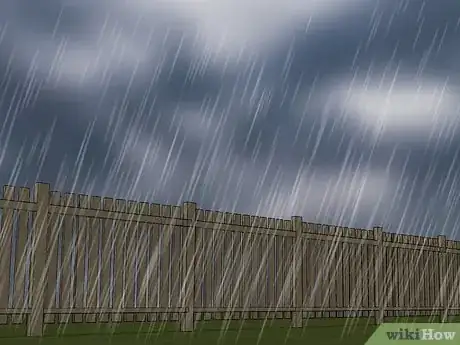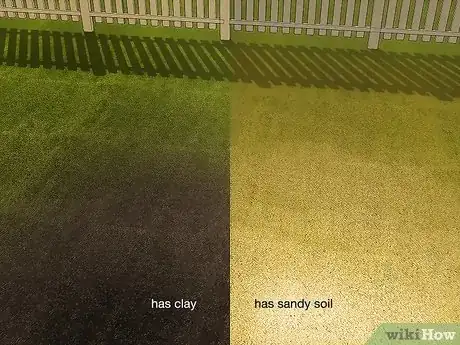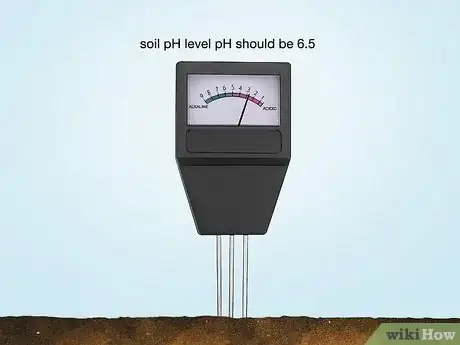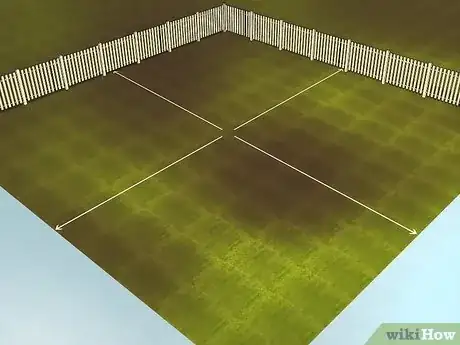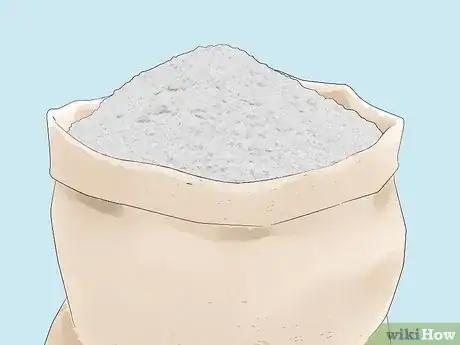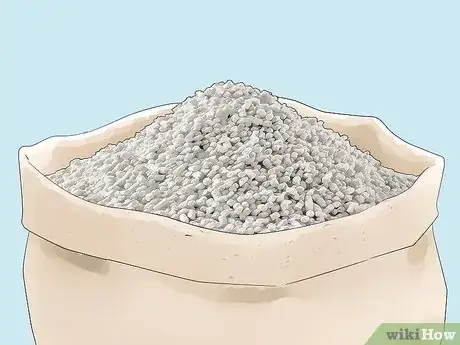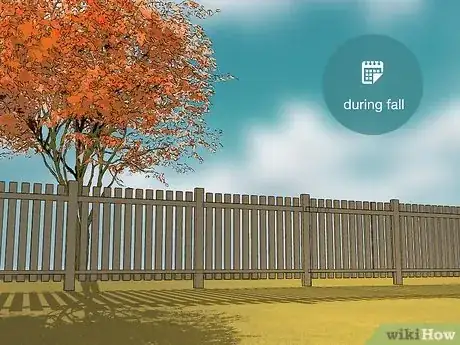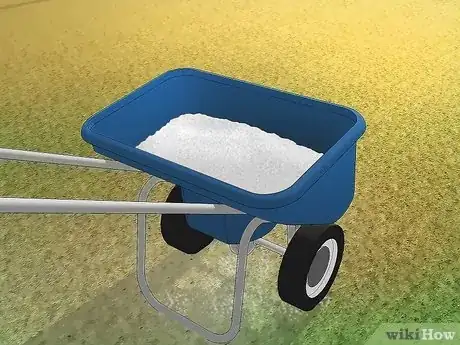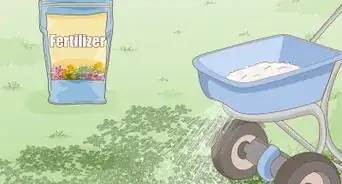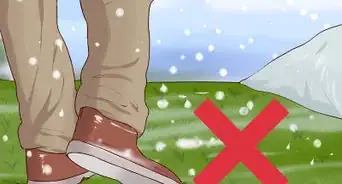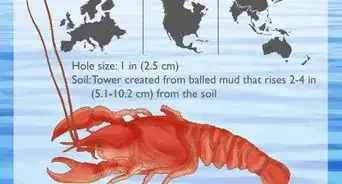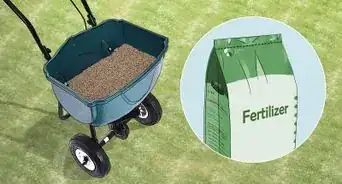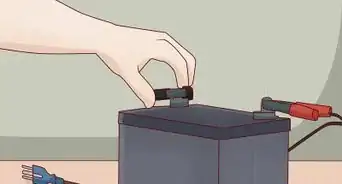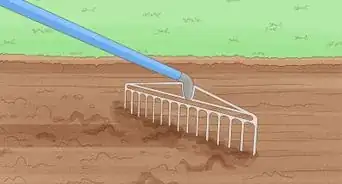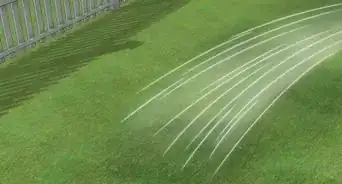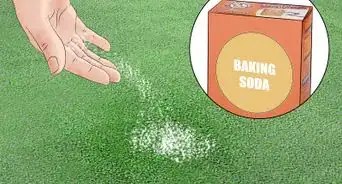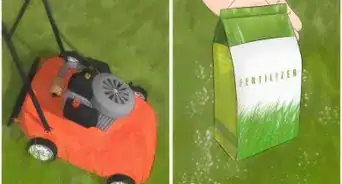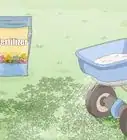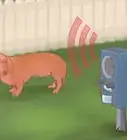This article was co-authored by Sina Kamran and by wikiHow staff writer, Luke Smith, MFA. Sina Kamran is a Hardscaping Specialist and the Owner of Design Scapes, Inc. in Santa Monica, California. With over 15 years of experience, he specializes in customized, site-specific hardscaping and landscaping design/build projects. He's a certified National Concrete Masonry Association (NCMA) designer, a certified installer with the Interlocking Concrete Pavement Institute (ICPI), and a Rain Bird Certified Irrigation Professional. Additionally, Design Scapes, Inc. has many 5-star rated reviews.
There are 13 references cited in this article, which can be found at the bottom of the page.
This article has been viewed 1,668 times.
It might seem that no matter how meticulous and loving you are with your lawn, you just can’t get it to its lushest possible green. Instead, your hard work is rewarded with dry, brittle, dull-yellow grass, and nothing seems to be working. It could be that your soil is acidic, and you need to apply some lime to bump that pH up a notch. Garden lime helps curb soil acidification and helps your lawn take up all those precious nutrients it needs to look its best. We’ve put together a simple guide that’ll help you spot signs that you may need to apply lime, conduct an easy soil test, and distribute that sweet, sweet lime. Let’s get liming.
Things You Should Know
- Use a soil test kit or send a soil sample to a local lab for the most accurate diagnosis.
- Look for yellowing grass, heavy rainfall, drought, or ineffective fertilizer or pesticides as signs you might need to apply lime.
- Walk the length and width of your lawn, counting your steps to estimate its area, then calculate how much lime you’ll need.
- Apply lawn or garden lime using a spinner fertilizer or sturdy garden gloves.
Steps
Signs Your Lawn Needs Lime
-
1Your lawn is yellowed or dying. Most plants, including lawn grass, prefer soil with a pH of 6.0-7.4. A soil with a pH lower than this (in other words, an acidic soil) clings to key nutrients like phosphorus and potassium, keeping them from being absorbed by grass, causing the grass to yellow and die. Applying lime will raise the pH of your soil and make these nutrients more readily accessible.[1]
-
2You live in an area with heavy rainfall. If your lawn receives frequent rainfall, it may lose its nutrients in a process called “leaching.” Leaching is when water running through your soil drains valuable nutrients like magnesium and calcium, leaving room for acidic elements like aluminum and iron, which can inhibit plant growth. Applying lime to your soil can make it more basic, and therefore more able to retain nutrients.[2]Advertisement
-
3You live in an area with drought. Few lawns can withstand a serious drought, but acidic lawns are especially vulnerable to dry spells. This is because acidic soil inhibits grass’s ability to grow roots, which lessens water intake, which can make periods of drought even dryer for your lawn.[3] If your lawn is suffering more than usual in a dry period or not recovering from a drought as it should, it could be time to apply some lime.
-
4Your lawn has lots of weeds. Many common weeds like moss, mullein, ox-eye daisies, nettles, and shepherds purse thrive in acidic soil.[4] If your lawn is overrun by weeds, it could be because your soil’s pH is imbalanced, and an application of lime is needed to adjust your soil’s pH.[5] This can help remove weeds without killing your grass.
- Applying lime to lawns with weed problems won’t actually kill the weeds (use an herbicide for that), but it can prevent further weeds.
-
5Your yard has clay or sandy soil. Both clay and sandy soil types are naturally acidic, and will require some lime application to keep them at a desirable pH.[6] Clay soils are somewhat sticky and can be rolled into a ball, while sandy soils are gritty, dry, and unable to be shaped at all.[7]
- Loamy soil is the standard for garden and lawn soils. It’s crumbly and easy to dig into.
-
6Fertilizers aren’t working. If you’re applying fertilizer to your lawn in hopes that it gets the green back into it, but the fertilizer seems to have no effect, it could be caused by acidic soil. Fertilizers that contain ammonium, nitrogen, or urea actually speed up the acidification of your lawn, which will help kill your grass, not revive it.[8]
- Check the ingredients on your fertilizer, and opt for those with nitrates, phosphorus, or potassium.[9]
-
7Pesticides and herbicides aren’t working. Research suggests that soil that is strongly acidic can blunt the effectiveness of many herbicides and pesticides. If you spray your lawn with either of these, but they don’t seem to yield the desired results, it may be time for a lime application.[10]
-
8A soil test indicates low pH. A soil test is the most accurate and reliable way to tell if your lawn needs a lime treatment. For best results, use an at-home pH testing kit or send a soil sample to a university facility, where professionals will test it for you and tell you exactly how much lime to apply. Most lawns and gardens prefer a pH of about 6.5.[11]
- You can also test your soil with baking soda and vinegar. Place 2 tbsp (28.3 g) of lawn soil in a bowl, then add 0.5 cups (120 mL) of vinegar. If the vinegar and soil mixture fizzes, your lawn soil is alkaline, and doesn’t need lime. If not, repeat the test with a new soil sample moistened with distilled water, and using 0.5 cups (120 mL) of baking soda instead of vinegar. If this mixture fizzes, your soil is acidic.[12] If your soil reacts to neither test, your soil is well-balanced, and you won’t need to balance it yourself.
Applying Lime to Soil
-
1Estimate your lawn’s area. Before you can apply lime, you need to know how large your lawn is in order to calculate how much lime to use. To do this, walk the length of your lawn and assume that one stride is about 3 feet (0.91 m). Then, do the same with the width, and multiply the measurements together.[13]
- Break up your measurements into smaller squares if you have an irregularly-shaped lawn. Then, add the area of those squares together. You don’t need to be precise; a rough estimate is enough!
-
2Purchase enough garden lime according to your lawn’s pH level. Using the chart below, match the reading on your pH test to your estimation of your lawn’s area to determine how much garden lime you’ll need. Most garden limes do indicate the amount per square footage you should apply, and in these instances, go with the instructions on the lime’s packaging.[14]
- For a pH of 4.9 or below: apply 200 lbs (~91 kg) of lime per 1,000 square feet (~93 square meters).
- For a pH of 5.0-5.5: apply 100 lbs (~45 kg) of lime per 1,000 square feet (~93 square meters).
- For a pH of 5.6-6.0: apply 50 lbs (~23 kg) of lime per 1,000 square feet (~93 square meters).
- For a pH of 6.1+: no lime is needed.
- Before you make your purchase, scope out wikiHow's Home Depot promo codes and Lowe's promo codes to see if you can find any good deals.
-
3Use pelletized garden lime for the easiest application. Lime comes in a number of forms: pulverized, granular, pelletized, and hydrated. Any of these will work fine (so long as it’s sold as “garden lime”), but keep in mind that the smaller the lime pellet, the more fast-acting the lime will be. However, the larger the pellet, the longer lasting the lime will be.[15]
- Some soil tests may also indicate magnesium levels. If your test indicates low magnesium levels, search for “dolomitic lime” to replenish the magnesium.
- In addition, use caution when handling hydrated lime (also called “builder’s lime), as this form can irritate your skin and eyes.[16]
-
4Apply lime in the fall, during a windless day. Though lime can be applied at any time of year, it’s best to apply lime in the fall, because winter precipitation will help work the lime into the soil over a period of months. Wait for a calm day with no wind so that your lime doesn’t blow away. Also apply limestone to bare lawns before seeding with grass.[17]
-
5Spread the lime using a spinner fertilizer. Load a spinner fertilizer with your garden lime, and push the spinner fertilizer up and down the length of your lawn to spread the lime, keeping a consistent, moderate pace. Be sure to cover the entire lawn, and feel free to do another pass if you have leftover lime.[18]
- Alternatively, distribute the lime by hand using a pair of sturdy gardening gloves. Toss fistfuls of lime in broad, controlled arcs while close to the ground.
- Only apply lime in 50-pound (~23 kg) increments. If your soil acidity and lawn area call for more than 50 pounds (~23 kg) of lime, consult the instructions on the lime’s packaging for acceptable application rates.
Expert Interview

Thanks for reading our article! If you'd like to learn more about lime for lawns, check out our in-depth interview with Sina Kamran.
References
- ↑ https://rocklandcce.org/resources
- ↑ https://hgic.clemson.edu/factsheet/changing-the-ph-of-your-soil/
- ↑ https://link.springer.com/article/10.1007/s11104-012-1580-1
- ↑ https://www.almanac.com/what-weeds-tell-you-about-your-soil
- ↑ https://extension.psu.edu/liming-turfgrass-areas
- ↑ https://ag.umass.edu/turf/fact-sheets/soil-ph-liming
- ↑ https://www.bbc.co.uk/gardening/basics/techniques/soil_testingyoursoil1.shtml
- ↑ https://hgic.clemson.edu/factsheet/changing-the-ph-of-your-soil/
- ↑ https://ucanr.edu/sites/soils/files/306283.pdf
- ↑ https://extension.psu.edu/liming-turfgrass-areas
- ↑ https://www.rhs.org.uk/soil-composts-mulches/ph-and-testing-soil
- ↑ https://www.almanac.com/content/3-simple-diy-soil-tests
- ↑ https://njaes.rutgers.edu/FS839/
- ↑ https://rocklandcce.org/resources
- ↑ https://www.canr.msu.edu/resources/facts_about_soil_acidity_and_lime_e1566
- ↑ https://www.rhs.org.uk/soil-composts-mulches/lime-liming
- ↑ https://extension.psu.edu/liming-turfgrass-areas
- ↑ https://extension.psu.edu/liming-turfgrass-areas
- ↑ https://rocklandcce.org/resources

